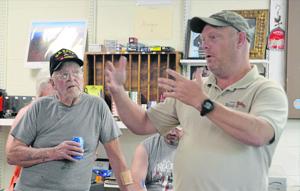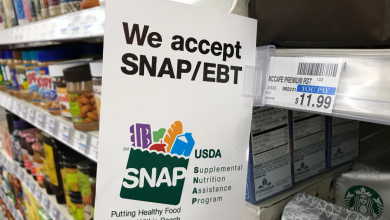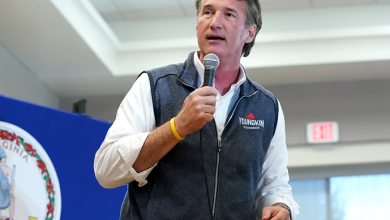Concerned Southwest Virginia groups work to restore once ubiquitous bobwhite

SALTVILLE —A Rich Valley hill now sings in the mornings with a whistle that’s been absent for decades.
The trill of “poor … bob-WHITE” once again echoes through the valley thanks to the efforts of a devoted trio of bobwhite quail enthusiasts. Their work has attracted the attention of state and national wildlife biologists who are cautious about the endeavor’s future but also stand ready to help.
In many locations around the country, ornithologists, wildlife biologists, and conservationists are working to try to restore the bobwhite quail population.
According to the Virginia Department of Wildlife Resources, “quail are now gone from many of their former locations.” The DWR acknowledges that a 70% loss of the bobwhite quail population since the mid-1960s seems conservative to some.
“Since 1970,” the Cornell Lab of Ornithology says, the “Northern Bobwhite numbers have dropped 77%,” according to Ken Rosenberg, a retired scientist with the Cornell Lab of Ornithology and lead author of the 2019 study that showed North America has lost 3 billion birds. According to Rosenberg, Breeding Bird Survey counts across the East, Southeast, and South show the same trend for quail: “All the surveys were showing a very steep decline.”
Andy Rosenberger works as a private lands wildlife biologist for the Conservation Management Institute from its Christiansburg office. Rosenberger met with area residents interested in helping rebuild this area’s bobwhite population earlier this month in Rich Valley.
He told them the loss of bobwhite in Southwest Virginia approached 100%. The population here nosedived, he said, reaching a critical level.
Dean Coe, of Marion, one of the men working to rebuild the population, said he last saw a bobwhite in the wild in 1995 on Sprouse Creek.
The biggest issue for bobwhites, Rosenberger said, is habitat.
The heyday for bobwhites, he said, came when families operated small farms with a few head of cattle and other animals. Rosenberger called it the Walton-style of farming, referencing the TV show set in rural Virginia during the Great Depression and World War II years.
Rosenberger said the landscape changed when large cattle farms came on the scene and this area turned to fescue grass as a source of food. This area’s natural grasses typically grow during the summer months. However, the drought-tolerant fescue is a cool season grass and can flourish through November, allowing much a longer grazing period.
Fescue, Rosenberger said, “changed the game.” He noted, “You can abuse the heck out of it, and it will come back.”
This region became part of the Fescue Belt, which extends from parts of Middle America to the Northeast and Southeast. The U.S. Department of Agriculture says the Fescue Belt amounts to about 10% of the country “but contains a high concentration of the nation’s beef cows.”
However, Rosenberger said, fescue is also a bunch type grass that “grows like a ’70s shag carpet” — thick and hard to penetrate. On the other hand, he explained that this area’s natural grasses grow in a way that allows pathways through it.
Though baby quail are about the size of a bumblebee, Rosenberger said, they can’t walk through fescue.
There’s also the food supply.
With fescue and more commercial farms, Rosenberger said, plants like ragweed, Goldenrod and others that farmers may consider to be weeds aren’t allowed to grow. Those plants, Rosenberger said, provide a “fantastic food source for quail.” He noted, “Quail don’t eat fescue seeds.”
These plants like ragweed also attract insects, a key source of nutrition for quail.
Then, there’s the need for protection. Quail, Rosenberger said, need brambles, blackberry thickets, and shrubby areas for nesting and brooding and escape cover to protect them from their predators such as possums, fox, and raccoons.
Rosenberger emphasized, however, that it’s unfair to lay the entire problem on farming.
What has to be done, he said, is find areas where bobwhite quail habitat can be developed that doesn’t cost landowners.
He’d also like to see thinking change about landscaping. Un-mowed, grown-up areas, he said, should be recognized as good habitat for quail and other wildlife.
“It’s an enormous private lands challenge,” said John Morgan, director of the National Bobwhite & Grassland Initiative on the Cornell Lab website. The NBGI is a collective of 25 state wildlife agencies and conservation groups formed in 1995 to restore wild bobwhite populations across their range.
Rosenberger was blunt with the Rich Valley gathering, saying, “A lot of things are going against quail, but things are starting to change.”
Rosenberger, who has worked in his current position for 12 years, said he’s “had more quail reports this spring than in the past years combined.”
He noted that a number of programs are in place to help interested landowners establish quail habitat and that west of the Blue Ridge quail hunting isn’t allowed on public land.
A Bureau of Wildlife Resources and DWR publication shares the story of Wythe County farmer Andy Kegley, who “planted some areas of his… farm to native warm-season grasses… incorporated a 30-foot buffer of native grasses around most of his property’s perimeter.”
As well, “During the summer, Andy flash grazes the native grass pastures, which keeps woody plants from invading and slows down natural succession providing excellent quail cover. While managing his farm for cattle is his top priority, Andy has incorporated forage that is good for his cattle for a few months of the year but great for wildlife year-round.”
Help is available to take similar action. Through the federal Farm Bill, the Natural Resources Conservation Service can help farmers make improvements to their grazing systems.
In some parts of the commonwealth and country, quail do thrive.
Rosenberger noted that quail’s nickname is “fire bird.” He said, “Quail and fire go together.” The bobwhite quail often show up after wildlands fire, he noted. Prescribed burning can be used to quail’s benefit, Rosenberger said, noting that it can be the least expensive tool for wildlife management.
While most people are afraid of fire, he said, “You should respect fire.”
That’s a case made by the Tall Timbers Research Station north of Tallahassee, Florida, one of the most respected institutions working with quail.
On the Cornell Lab’s website, Alex Jackson, game bird research and extension biologist at the Tall Timbers, reiterated Rosenberger’s words. “We call quail the fire bird,” said Jackson.
The site continues, “Fire is a common—many would say indispensable—element of bobwhite management in the pine woodlands of the Southeast, vital to keeping the understory from growing too thick and the open savannas from maturing into closed-canopy forest.”
In the Tall Timbers region on the Florida-Georgia line, Jackson said, quail are “at historical highs.”
While they have no immediate plans to use fire, Coe told Rosenberger that he and his cohorts with the help of multiple area landowners are working to make a difference. “We’re planning on flooding this valley with them. We’ve gone too long without hearing them holler.”
Coe, Allen Houchins, of Lick Creek, and Darrell Milgrim, of Max Meadows, have already released hundreds of quail onto a variety of properties in Smyth and Wythe counties.
The three men are pen raising the bobwhite quail and then releasing them.
That practice isn’t accepted by many researchers, and Rosenberger said quail are one of the most researched species in the country.
Rosenberger told the gathering that he’s interested in their efforts and is “very curious.” “What you say is happening ain’t supposed to happen.” Nest success with cage-raised birds hasn’t occurred, he said.
“With all the research up to this point,” Rosenberger said, “it’s never worked.”
Universities and state agencies agree on that point.
The Maryland Department of Natural Resources says, “Many state wildlife agencies, including Maryland, have tried to artificially restock their game bird populations by releasing pen-raised birds. There have been more failures than successes and it has taken two decades of trial and error attempts for state wildlife agencies to consistently agree that pen-raised bird introductions simply do not work!”
However, Coe, Houchins, and Milgrim all report reproduction in the wild and the spread of quail to areas beyond where they were released.
Milgrim said he began raising quail about 15 years ago for a shooting preserve. Ultimately, most of those birds were claimed by disease, coccidiosis.
When he decided to try again about three years ago, Milgrim moved the birds to a different location and treated them to prevent the parasite that causes coccidiosis. Since then, he said, “I’ve never had a sick bird.”
Last year, Milgrim released more than 800 quail.
He and his son, Grant, have experimented with incubators and now use a digital one that keeps the temperature precise and allows air to circulate. The incubator, Milgrim said, will hold 1,200 quail eggs and about 90% of them hatch.
Once they hatch, Milgrim said he uses special lights, vitamins, probiotics and hydration to bolster their health. He acknowledges that quail are fragile. “There’s a lot more to raising them than people think,” he said.
Milgrim sells some of his quail, but releases the majority.
Telling of some of his observations of baby quail in the wild, Milgrim said, “I can say for sure there are birds that have made it in the wild.”
“At my house,” Milgrim said the quail act “like a rooster in the morning when the sun comes up.”
Milgrim introduced Marion’s Coe to raising quail.
Coe, who released 562 quail last October, also speaks with certainty of the birds surviving in the wild. “I hear new calls every day…. It’s amazing,” Coe said. He reports seeing quail and baby quail on Sprouse Creek, Lick Creek, Hungry Mother State Park, Tannersville, Bear Creek, and Broadford.
Appalachian Trail hikers have even reported seeing quail where the AT crosses Rt. 42, Coe said.
Jim Coulthard’s Rich Valley “hillside sings in the morning,” Coe declared.
Houchins took on the project as a hobby for his son, and, at 48, he remembers hearing the bobwhite call regularly as a youngster in Tannersville and found himself missing the whistle.
Today, Houchins said his son loves the work. For his motivation, Houchins said, he’s trying “to give back.”
Coe and Houchins work to support the quail they’ve released, distributing food and medication. Coe makes the journey from Marion to Rich Valley daily to check on the birds.
They don’t plan to stop their work even with the costs of feed and fuel. Coe said he’s gotten landowners with more than 1,500 acres to agree to quail releases.
Coe does get gratification from the work. Remembering seeing a male and female bobwhite with nine babies in tow, the Vietnam veteran reflected, “That was worth it all.”




